In the southern part of Scotland, a remarkable structure dominates the rural landscape. Once part of an amazing palace complex, this intriguing mausoleum served as the final resting place of a family of wealthy dukes.
Let’s take a closer look at some of the most interesting facts about Hamilton Mausoleum, a remarkable feat of architecture that once held a surprising record.
1. It’s located in a large town in South Lanarkshire
Hamilton Mausoleum once served as the final resting place of the Dukes of Hamilton, a title in Scotland that was established in 1643. It’s located in the town of Hamiton, the administrative center of South Lanarkshire.
This town has a population of over 54,000 residents is virtually located in the southeast suburbs of the largest city in Scotland, Glasgow. It’s just 16 kilometers (10 miles) southeast of Glasgow’s city center.
The country’s capital, Edinburgh, isn’t too far away as well as this city can be found at a distance of 59 kilometers (37 miles) to the northeast of Hamilton. The mausoleum itself can be found just northeast of the town center in an area referred to as the Strathclyde Country Park.

2. It was once part of a palace that dated back to the 13th century
The mausoleum was once part of an immense palace that has roots dating back to the 13th century. The original structure on this location was a tower house, a fortified structure, that was referred to as “The Orchard” or “Hamilton Castle.”
It has been the seat of the powerful Hamilton family ever since, but the first official mention of a structure on this site was in a charter of 1445. This was the year that William Hamilton was turned into “Lord Hamilton.”
Although the structure was already referred to as a “Palace” following a construction project that was completed in 1591, the main expansion phase was completed between 1684 and 1701.
The palace was enlarged once more between 1822 and 1828 but it was eventually demolished between 1921 and 1926. The mausoleum is the only large structure still standing that was part of the palace complex, although it was situated 200 meters (656 feet) away from it.
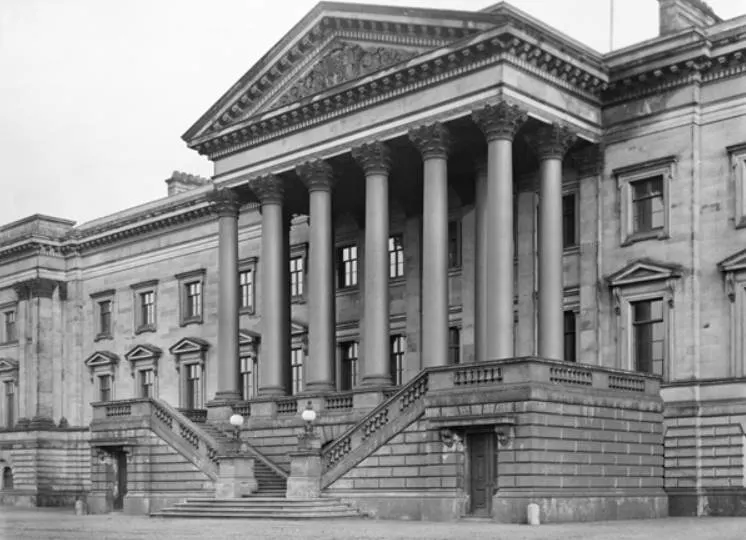
3. It was built by the 10th Duke of Hamilton in the 19th century

Hamilton Mausoleum was built to serve as the final resting place of the Dukes of Hamilton. Before its completion, the family members who passed away were buried in a vault that stood in the eastern section of the palace inside the collegiate church.
Its construction was initiated by Alexander, 10th Duke of Hamilton (1767-1852), mainly because the church had become so dilapidated at the time that it was in sheer contrast with the grandeur of the newly enlarged palace.
The construction lasted between 1842 and 1858 which means that the 10th Duke of Hamilton didn’t live to see the mausoleum completed.
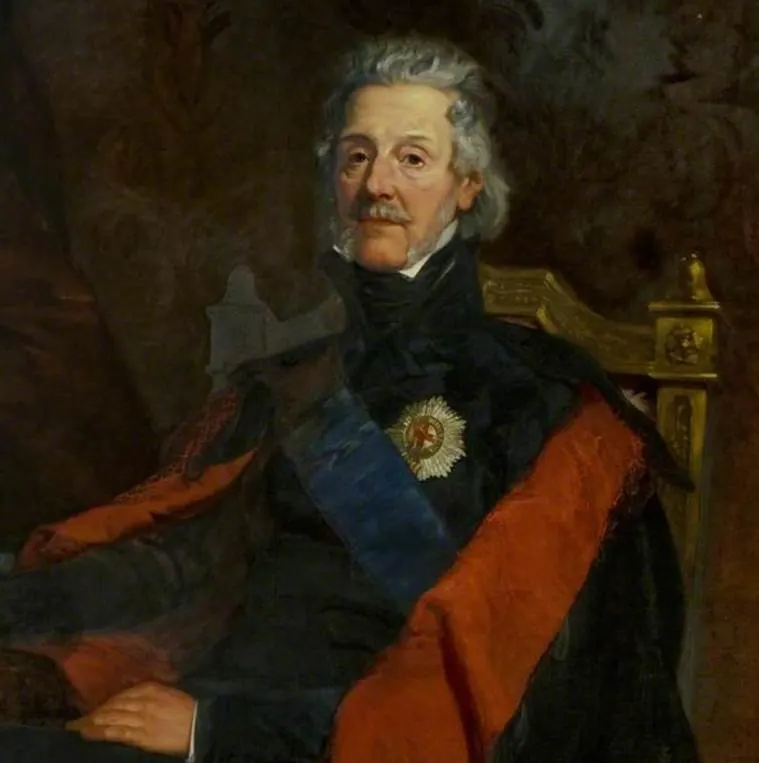
4. The structure was designed by a renowned Scottish architect
The original architect of the domed structure shared the same name as the dukes. His name was David Hamilton (1768-1843) and the Glasgow-based architect was a renowned architect at the time.
His major works in Glasgow were the Royal Exchange, now the Gallery of Modern Art, and the Nelson Monument in Glasgow Green.
He didn’t manage to complete the project as he died well before it was completed. It was finished by architect David Bryce and sculptor Alexander Handyside Ritchie and is famous for its dome that resembles that of the Pantheon in Rome.
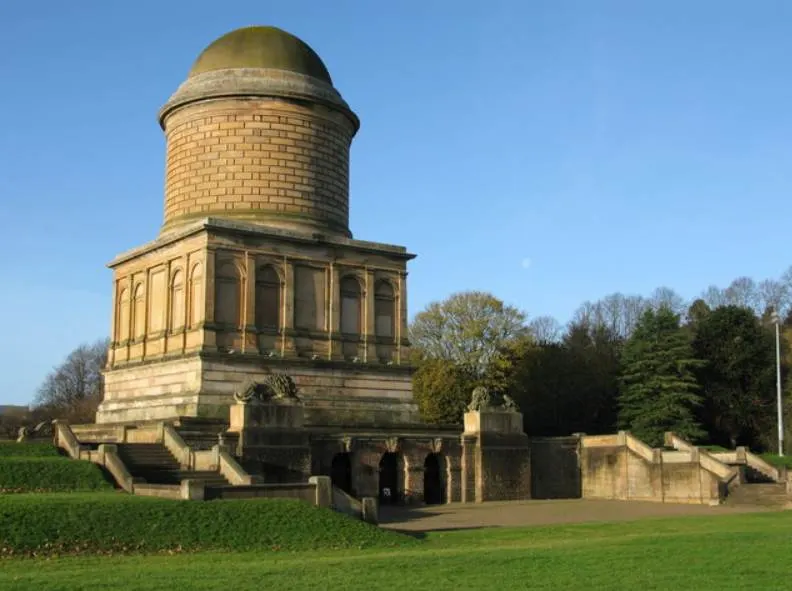
5. The interior of the structure held a remarkable record until 2014
The dome of the building reaches a height of 37.6 meters (123 feet), something that makes it a remarkable structure in the park in Hamilton. This height also created a remarkable effect as the mausoleum held a world record for the longest echo inside a building between 1858 and 2014.
When a door is slammed inside the mausoleum, it takes 15 seconds for the echo to stop, quite an amazing phenomenon.
The record of longest reverberation in the world was eventually broken by an underground oil depot in Scotland referred to as the Inchindown oil tanks. These have a length of 237 meters (778 feet) and a gunshot reverberated for 112 seconds at 125 hertz.
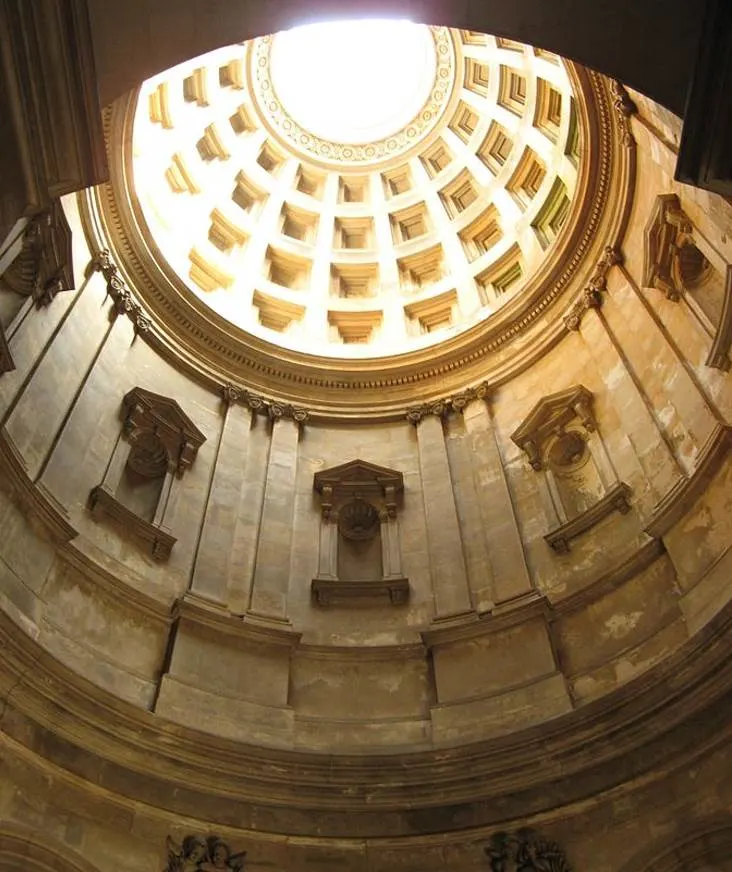
More interesting facts about Hamilton Mausoleum
6. The original castle that was transformed into an immense palace was a fortified structure intended for defending the area. This became very clear during the demolition of the palace in the early 20th century.
In the northwestern part of the palace, walls were discovered that were up to 2.7 meters (8 feet 10 inches) thick. That’s 3 times the size of the other walls of the castle which were 0.9 meters (2 feet 11 inches) thick. This emphasizes the defensive nature of the original Hamilton Castle.
7. The 10th Duke of Hamilton was buried inside the mausoleum that he commissioned and his remains were placed inside a black sarcophagus that dated back to the Ptolemaic era of Egypt (305 B.C. – 30 B.C.). He initially intended to sell the Sarcophagus to the British Museum.
The museum in London declined the purchase because they expected to buy the coffin that once served as the final resting place of Princess Ankhnesneferibre who lived between 595 and 525 B.C.
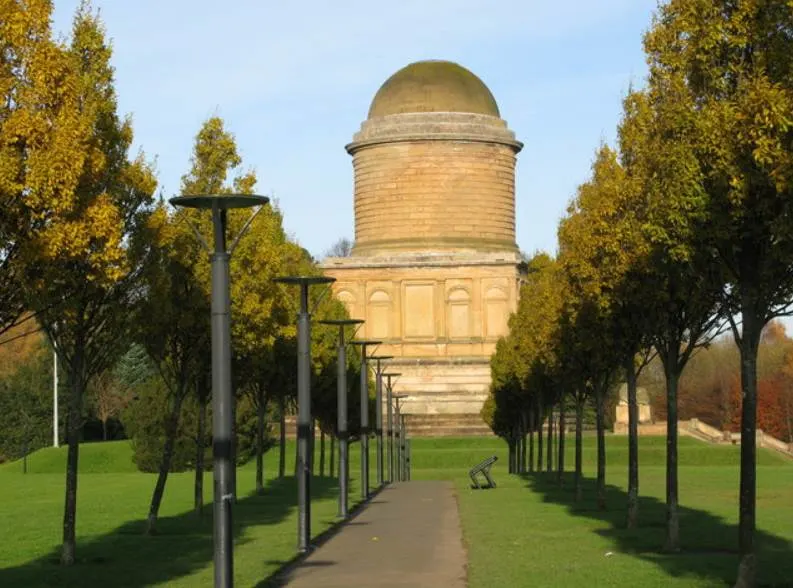
8. The 10th Duke of Hamilton wasn’t the only member of the family that was buried here in the 19th century. He was adjoined by 17 other members of the Hamilton, going back to James Hamilton, 1st Lord Hamilton (1415-1479), the man who first acquired Lordship status.
9. When Hamilton Palace was demolished in the 1920s, the remains of the family members of the Dukes of Hamilton were removed as well.
While the 11th and 12th dukes were buried on the Isle of Arran off the west coast of Scotland, the remains of the other family members were interred nearby in Bent Cemetery in Hamilton.
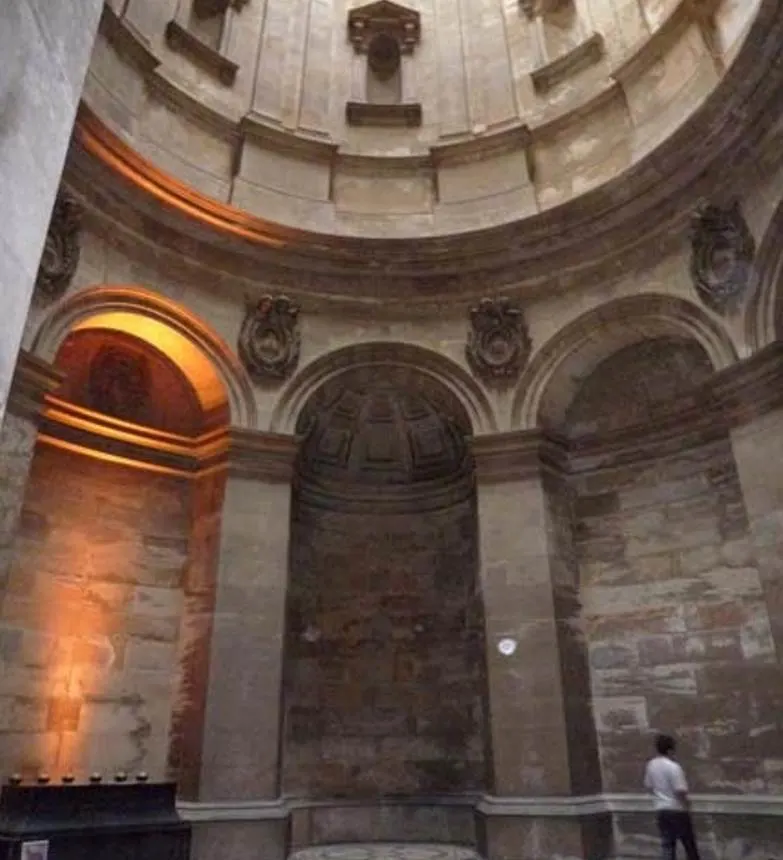
10. It’s a miracle that the Mausoleum still stands today, and that’s not just because it was part of the demolished palace. By the 1960s and 1970s, it was discovered that the building was seriously subsiding.
This caused a genuine fear that the building would have to be demolished but because of the monolithic, plinth-based construction, no structural cracks occurred and the building settled back to a normal position.
11. The echo isn’t the only remarkable effect inside the building. The curved dome is also a so-called “whispering gallery.” This means that 2 people can stand inside niches of the wall on opposite ends of the building and have a whispering conversation while perfectly hearing each other.
12. The most fascinating attraction inside the mausoleum today is the original bronze doors that once served as entrance doors. These were modeled on the incredible bronze doors of the Florence Baptistery.

